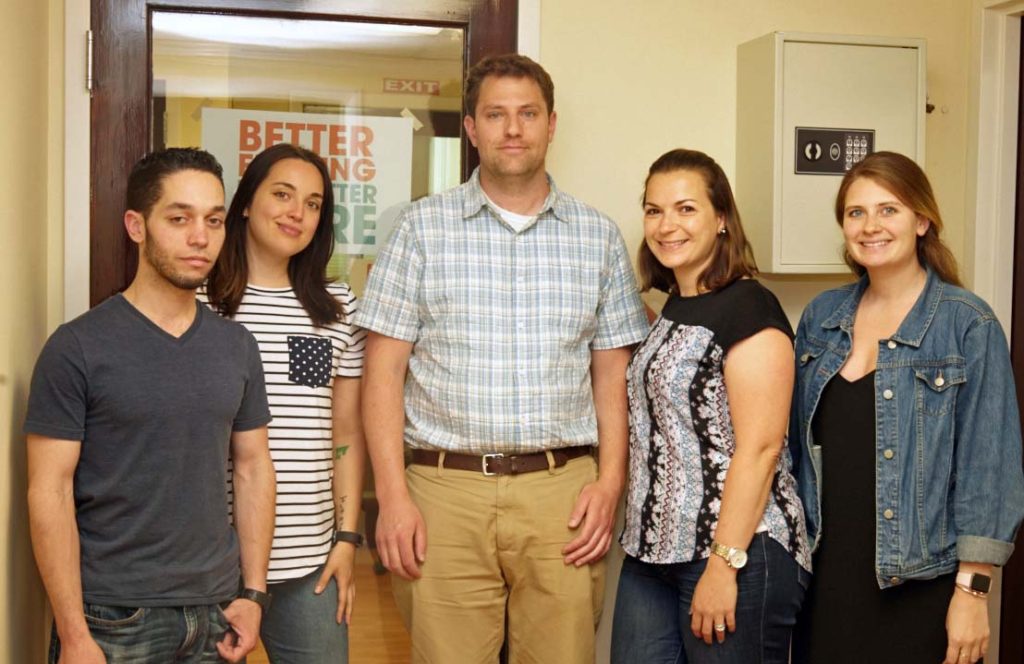The social service agencies on which vulnerable New Yorkers depend rely heavily on the state government for financial support inasmuch as they act as extensions of it in fulfilling many responsibilities that would otherwise be borne by the public sector. Nevertheless, the period following the Great Recession (i.e., 2011 to the present) has been marked by a massive governmental divestment in the private nonprofit service sector with predictably deleterious effects on many organizations, their dedicated workforces, and the individuals entrusted to their care.
This has occurred despite steady growth in the state economy in recent years and a corresponding increase in inflation-adjusted state disbursements for other sectors and services. For instance, financial aid for public schools has risen at an annual average rate of 4.6% during this period. State Medicaid expenditures have increased by 3.8% per year. By contrast, however, state aid for human services has decreased by 26% between 2011 and 2018 (The New School Center for New York City Affairs, 2019). This bifurcation betrays the deceit inherent in a 2% spending “cap” that has been invoked selectively and led to unforced austerity within some, but clearly not all, industries. This spending cap has been in effect since 2012 but applies only to the “state operating funds” component of the annual state budget. Operating funds constitute little more than half of the budget and exclude federal aid and other resources. Furthermore, as illustrated by the foregoing trends, this cap applies to operating funds in the aggregate and not to specific expenditures itemized therein. Spending that exceeds the cap for select programs and services necessitates draconian reductions for others in order to ensure total spending does not exceed statutorily prescribed limits. The human services sector has borne the brunt of this budgetary balancing act.
It is therefore not surprising that nonprofit human services organizations have experienced unprecedented challenges in recruiting and retaining qualified personnel, as rapidly diminishing revenue has rendered them incapable of offering anything more than modest compensation for extraordinarily challenging work. A recent survey of 126 community-based behavioral health service agencies representing 14,499 employees revealed statewide personnel vacancy and turnover rates of 14% and 34%, respectively (Mental Health Association in New York State, Inc., 2019). These rates reflect statewide averages. Vacancy and turnover rates are considerably higher in Downstate regions – Long Island and New York City, in particular. These trends compromise the viability of these organizations and the quality of care afforded to increasingly vulnerable service recipients. Moreover, the decimation of our valued workforce occurs at a most inauspicious time. A deinstitutionalization movement, initiated decades ago and continuing in earnest, aims to support vulnerable individuals in integrated, community-based settings (i.e., the “least restrictive” alternatives to institutionalization). The laudable philosophical and financial underpinnings of this movement notwithstanding, its success is contingent on robust investment in the community-based health and social services infrastructure. That is, individuals emerging from hospitals, nursing homes, adult homes and similarly restrictive settings frequently manifest complex and comorbid health conditions and associated life challenges for which intensive and comprehensive support services are necessary lest they falter in the transition to community-based care. Their right to reside in less restrictive settings is surely beyond question, and it now bears the imprimatur of the United States Supreme Court. Its landmark ruling in Olmstead v. L.C. codified in law individuals’ right to community integration and led to the establishment of a statewide Olmstead Implementation Plan that informs many public policy proposals. For this and many other reasons, our community-based system of care warrants an infusion of additional resources with which to meet the needs of formerly institutionalized individuals.
The opposite has occurred, however, and recent initiatives continue to give the nonprofit human services sector short shrift. For example, the Health Care Efficiency and Affordability Law for New Yorkers (HEAL-NY), legislation that authorized substantial investments in facility and information technology enhancements for health and social service organizations, allocated only 1.4% of $2.76 billion to community-based providers. The Capital Restructuring Financing and Healthcare Facility Transformation Programs were established to promote similar improvements in the health and social services infrastructure but included de minimis allocations to community-based providers (1.5% and 6.5%, respectively) (New York State Council for Community Behavioral Healthcare, 2019). Other initiatives aspire to nothing less than the utter transformation of our health and social services system and the replacement of costly institutional services with efficient and effective community-based alternatives. These are consistent with the espoused “Triple Aim” of healthcare reform, longstanding principles underpinning the redesign of the State’s Medicaid program, and the aforementioned Olmstead Implementation Plan that seek to improve individuals’ experience of the care process, enhance the overall health of vulnerable populations, and reduce the per capita cost of care. Nevertheless, these grand initiatives, including the Delivery System Reform Incentive Payment (DSRIP) program, Value Based Payment Quality Improvement Program (VBP QIP), and New York State Behavioral Health Value Based Payment Readiness Program, have allocated only 0.7% of $8.47 billion to community-based organizations (New York State Council for Community Behavioral Healthcare, 2019). Such a meager investment stands in stark contrast and diametric opposition to these initiatives’ intended aims and requirements for success.
The most recent example of the state’s continuing neglect of the nonprofit social services sector is its deferral of a statutory Cost of Living Adjustment (COLA) for its workforce. This workforce, already grossly underpaid in comparison to those in the public and private sectors, relies on modest increases to mitigate the adverse effects of inflation and other economic stressors. Yet the state has approved this COLA for only two of the past ten years, excepting modest “targeted” adjustments for select personnel at the exclusion of others. This has enabled the state to “save” approximately $700 million during this period. This is roughly equivalent to a rounding error in an annual state budget of $175 billion borne on the backs and bank accounts of its most underpaid personnel. It has surely exacerbated the crises in recruitment and retention described above. It has also led many poorly paid professionals to rely on some of the same publicly funded benefit and entitlement programs on which their clients depend. Approximately one-third (32%) of low-wage workers, many of whom are employed in community-based social services agencies, access one or more public assistance programs (Jacobs, Perry, & MacGillvary, 2016). Thus, the state’s inattention to the needs of its social services employees is not merely inimical to its stated objective to replace institutional care with efficient and effective community-based alternatives. It is costly inasmuch as it drives expenditures in Medicaid, Supplemental Nutrition Assistance Program (SNAP) benefits, Safety Net Assistance (SNA), and other publicly funded programs that would be easily avoided with modest investments in an undervalued workforce.
Continuing neglect of the nonprofit social services sector is surely misguided and immoral, but it also perpetuates an inefficient and ineffective practice characteristic of our broader health and social welfare infrastructure that incurs considerable cost and produces mediocre results. The U.S. bears a dubious distinction among industrialized nations for its outsized healthcare expenditures. They consume nearly a fifth (17%) of our GDP, whereas major European nations commit considerably less (about 10% of GDP on average) but achieve better outcomes on several key measures of population health (Butler, 2016). Such disparate outcomes may be attributed to many factors, but one cannot ignore the primacy of the social safety net in other industrialized nations and its impact on population health and social welfare. Major nations within the Organization for Economic Cooperation and Development (OECD) spend nearly twice as much on social services as healthcare (about $1.70 on social services for each $1 on health services). By contrast, the U.S. spends merely 56 cents on social services per healthcare dollar (Butler, 2016). This practice effectively ignores an emerging body of evidence that suggests Social Determinants of Health (SDoH) (i.e., individuals’ economic and housing opportunities, education and employment status, etc.) are more determinative of population health than healthcare.
New York State has an opportunity to learn from its partners abroad and to alter a longstanding trajectory of neglect of its social services sector. This would surely be to the benefit of an immensely dedicated and undervalued workforce on which the state depends for the fulfillment of its policy objectives. Most importantly, it would enhance the health and welfare of our population and honor our solemn commitment to the most vulnerable among us.
The author of this article may be reached at abrody@searchforchange.org or (914) 428-5600 (x9228).



